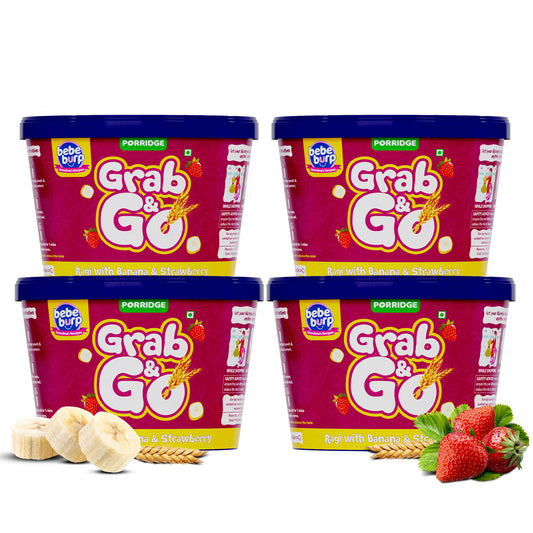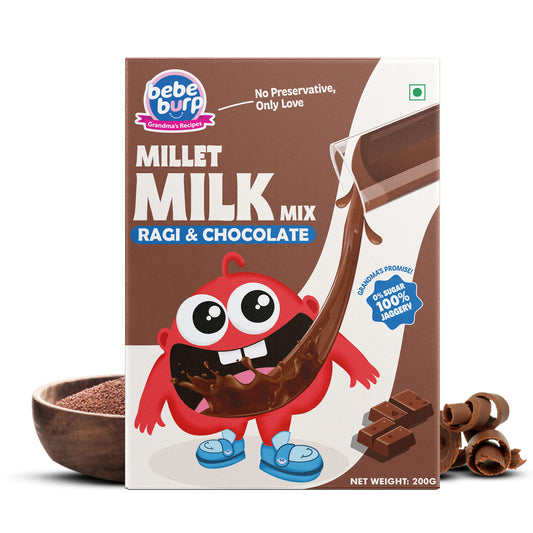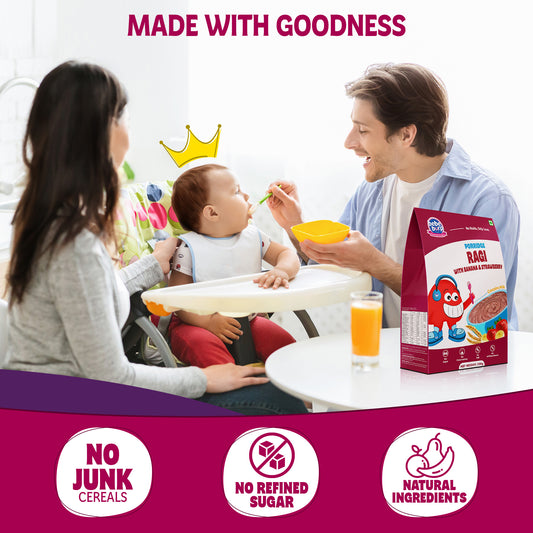Absolutely, ragi with wheat flour can be safely mixed for babies, especially once they have started solids around 6 months of age.
Ragi or finger millet is an iron and calcium-rich gluten-free food, making it a worthy first addition to the diet.
Flour from wheat, introduced after 8 months, is also a prime carbohydrate and energy source.
Ragi and wheat taken together provide a balanced blend of nutrients to help good growth and development. Your child can have oatmeal, pancakes, or soft rotis from this healthy mix.
Ragi and Wheat Flour for Babies
Popular weaning foods in Indian homes are both wheat flour and ragi, finger millet. Popular weaning foods in Indian homes are both wheat flour and ragi, finger millet.
Packed in vital minerals, they offer a good supply of energy and help newborns grow in health.
Ragi loads in dietary fibre, iron, and calcium.It's a decent source of plant-based protein as well.
Wheat flour supplies some protein, B vitamins, carbs, and fibre.
Combining the two makes a healthy dinner, particularly if you are switching your infant to more textured meals.
Is Ragi Flour Gluten-Free?
Yes, ragi flour is inherently gluten-free, which qualifies for infants with coeliac disease or possible gluten sensitivity.
But since wheat flour contains gluten, the result when you combine ragi with wheat flour is not gluten-free.
See a paediatrician before introducing this mix if your child is known to have a gluten sensitivity either suspected or confirmed.
Can We Mix Ragi and Wheat for Babies?
It is perfectly fine to combine ragi and wheat flour for babies after the age of 6 to 8 months, provided that self-tolerance is first established.
In terms of mixing ragi with wheat, the nutritional advantages are:
- Comprehensive nutrition: Helps achieve well-balanced nutrition since ragi contains calcium and some iron, while wheat provides carbohydrates, which serve as energy.
- Better flour bicarbonate: Wheat helps reduce the dense ragi flour to a more suitable texture for easier digestion.
- Improved taste: Wheat’s mild flavor makes ragi more enjoyable to consume by softening the strong, earthy taste.
As always, small amounts should be utilized initially while keenly looking out for any allergic or intolerant reactions.
How to Prepare Baby Food with Ragi and Wheat Flour
Ragi-Wheat Porridge Recipe (6+ Months)
Ingredients:
-
1 tbsp ragi flour
-
1 tbsp wheat flour
-
1 cup water or milk (breastmilk/formula for under 1 year)
-
Optional: pinch of cardamom or mashed fruit
Instructions:
-
Dry roast both flours separately until aromatic.
-
Mix and add water slowly, stirring to avoid lumps.
-
Cook on low heat until it thickens (5–7 minutes).
- Let it cool before feeding your baby.
Tips:
-
Use homemade or organic flours for purity.
-
Introduce plain ragi and wheat separately before mixing.
- Adjust consistency according to your baby’s age.
Potential Allergies and Precautions
Both grains are generally safe, however, some precautions should be taken, including:
- Wheat is a common allergen: Check for signs of skin rashes and bloating, as well as diarrhea.
- Add ingredients one at a time: Space out increments by 3-5 days.
- Avoid sweeteners: Do not include sugar or honey if the child is under one year of age.
- Undercooked grains may promote indigestion: Cooking should be done properly.
As with all new foods, check with your child’s doctor before introducing anything new.
FAQ
Is It Good to Mix Ragi with Wheat Flour?
Combining ragi and wheat flour can help growing infants because the mixture provides more nutrients and sustenance for them.
Can We Mix Millet Flour with Wheat Flour?
Of course! Blending milled flour like ragi, bajra, or jowar with wheat can increase nutritional value. Do introduce each grain one at a time first to check for allergies.
Can We Mix Ragi and Jowar?
You can mix ragi and jowar flour because they are both gluten free and packed with nutrients. Perfect for babies who need to avoid gluten.
Can we mix ragi and wheat for babies?
You can blend ragi and wheat together to make porridge, dosa or pancakes once the infant is able to handle both grains separately.
Conclusion
Combining ragi and wheat flour for infants can serve as an impressive way to prepare a nourishing, well-balanced diet.
Confirm personal tolerances, ensure food safety, and adhere to appropriate developmental feeding stages.
This approach, with thoughtful preparation, can greatly complement the baby's gradual transition from milk feed.












